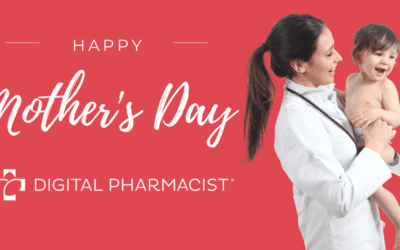It’s extremely important to understand your pharmacy income statement. Why? Because when you do, you’ll be able to more effectively manage your business, make more informed decisions and increase your profits.
In this three-part series, we’ll break down the key components of your pharmacy income statement to help positively impact your business’s bottom line.
First off, what is an income statement?
An income statement is a monthly, quarterly, or annual summary of a business’ revenues and expenses to review the cash flow and profitability of the business. It should follow a consistent format to allow a business owner the ability to review and monitor the financial performance of the pharmacy.
The format should be as follows:
Revenues (series part 1)
– Cost of Goods Sold (series part 1)
= Gross Profit (series part 2)
– Expenses (series part 2)
= Net Profit (series part 3)
A successful pharmacy owner will understand and know these numbers at any point in time. While you may prefer to leave the number-crunching to your accountant, understanding your pharmacy’s financials enables you to make better business decisions.
When you’re aware of the amount of money going in and coming out of your business, you have a better idea of your pharmacy’s overall financial health.
Here, we begin our income statement series by exploring revenue.
Revenue and What It Means:
Revenue – Deductions = Net Sales
Net Sales – Cost Of Goods Sold (COGS) = Gross Profit
Gross Profit – Operating Expenses = Net Income/Net Profit
Great! So why is this so important?
Without revenue there can be no profit. In pharmacy, revenue can be made up of prescriptions, over-the-counter, durable medical equipment and other niche market products such as immunizations.
In most pharmacies, third-party insurance (non-cash) prescriptions make up the majority of sales; therefore, it is important to monitor and manage the reimbursements from third-party payers to ensure proper revenues. It is important to remember that reimbursements equal revenue.
Therefore, the focus should be on increasing revenue and decreasing cost of goods sold. This will net a higher gross profit which, in turn, covers your operating expenses. The latter includes salaries, rent, office supplies, and the like.
How to increase your pharmacy’s revenue
An increase in revenue will mean increased
–Diversify: offer a variety of products and essentials for purchase, in addition to prescriptions.
–Offer other services: providing immunizations or flu shots can bring more customers through your doors.
–Use it or lose it: the technology included with dispensing software and Point-of-Sale (POS) can help you ensure proper product pricing.
–Monitor reimbursements: ensure that you’re properly compensated for dispensed scripts.
–Suggest add-ons: your pharmacy staff can advise customers of supplements and the like that alleviate side-effects caused by some medications.
Cost of Goods Sold
What are Costs of Goods Sold?
In a retail business, such as your independent pharmacy, the cost of goods sold (COGS) is simply the cost of the merchandise (or inventory) that you buy from a supplier, which you then resell to your customers. COGS does not include operational expenses, such as labor, utilities, rent, salaries, and other overhead.
Cost of goods sold are an expense, which means they’re deducted from your revenue to determine gross profit.
Why Cost of Goods Sold are important
When you properly manage your cost of goods sold, you maintain greater control of your pricing strategy of both prescription and non-prescription products.
Net Sales– Cost Of Goods Sold = Gross Profit
By properly pricing the items that your pharmacy sells, you can generate more revenue.
Typically, the largest inventory items purchased by a pharmacy are brand-name and generic pharmaceuticals. Depending upon a pharmacy’s needs, one may purchase more high-cost, brand name drugs, or more low-cost, generic drugs. Regardless of the specific product mix, it’s important to understand how these items are priced to ensure revenues are maximized against the items.
Increasing or decreasing COGS will impact your gross profit. If your costs decrease, profit will likely increase; conversely, when your costs increase, profit will decrease.
Proper inventory management is a key component to maintaining a healthy cost of goods sold.
Ways to decrease COGS (to increase profit margins)
The lower your costs, the higher the profit you’ll generate. With that, accurate inventory management is crucial – as is knowing when and how to buy product.
Here are some ways to decrease your COGS:
-Pricing: Understand and discuss pricing regularly with your primary and secondary suppliers to ensure your pricing is competitive.
-Maintain proper inventory accounting principles: use just-in-time (JIT) inventory to your advantage and prevent dollars from sitting on your pharmacy shelf. Monitor your inventory turns with regard to your fast and slow-moving items.
-Ensure inventory control: put proper procedures in place to reduce product shrinkage/loss.
-Purchase wisely: take advantage of additional incentives offered by your suppliers (examples may include: payment terms, trade shows, bulk order discounts, etc).
Check out part 2 of this three part series, where we cover gross profit and operating expenses.
Digital Pharmacist is committed to helping pharmacies transform their businesses. Learn more about how we can support your growth by getting in touch with us today.


